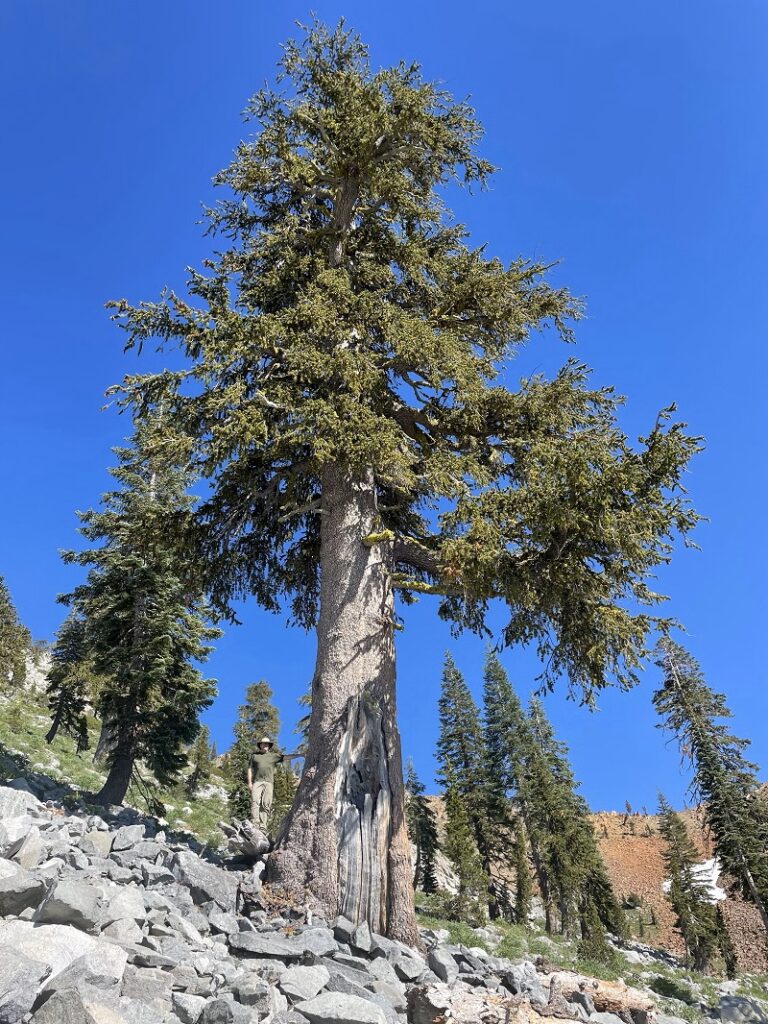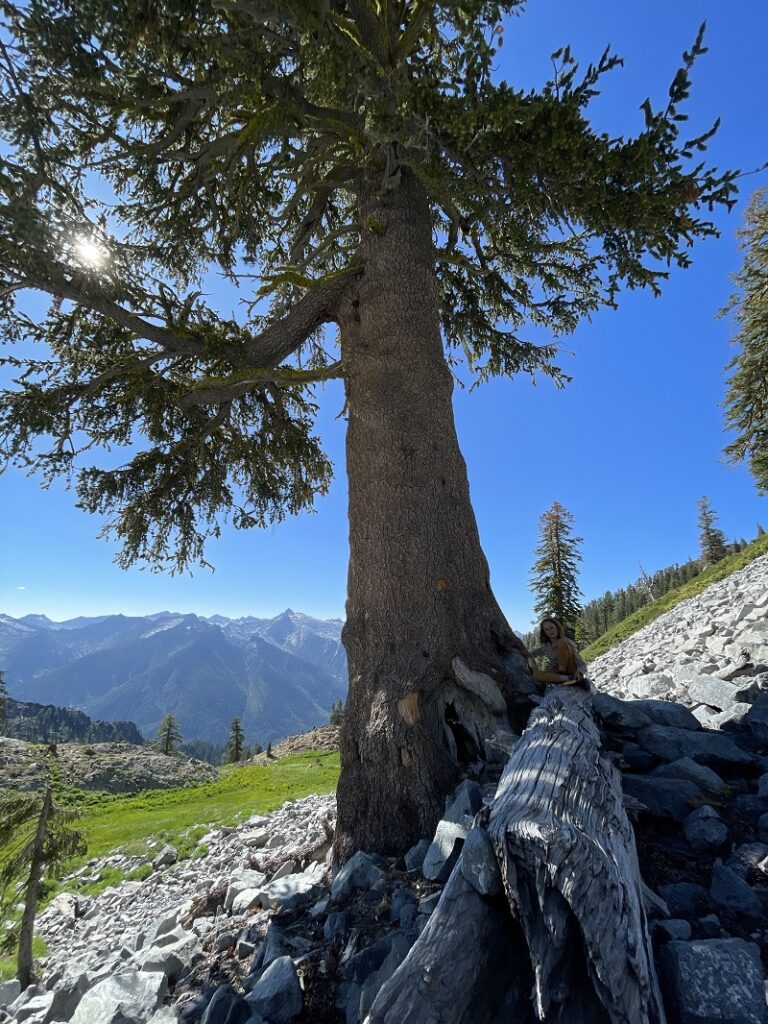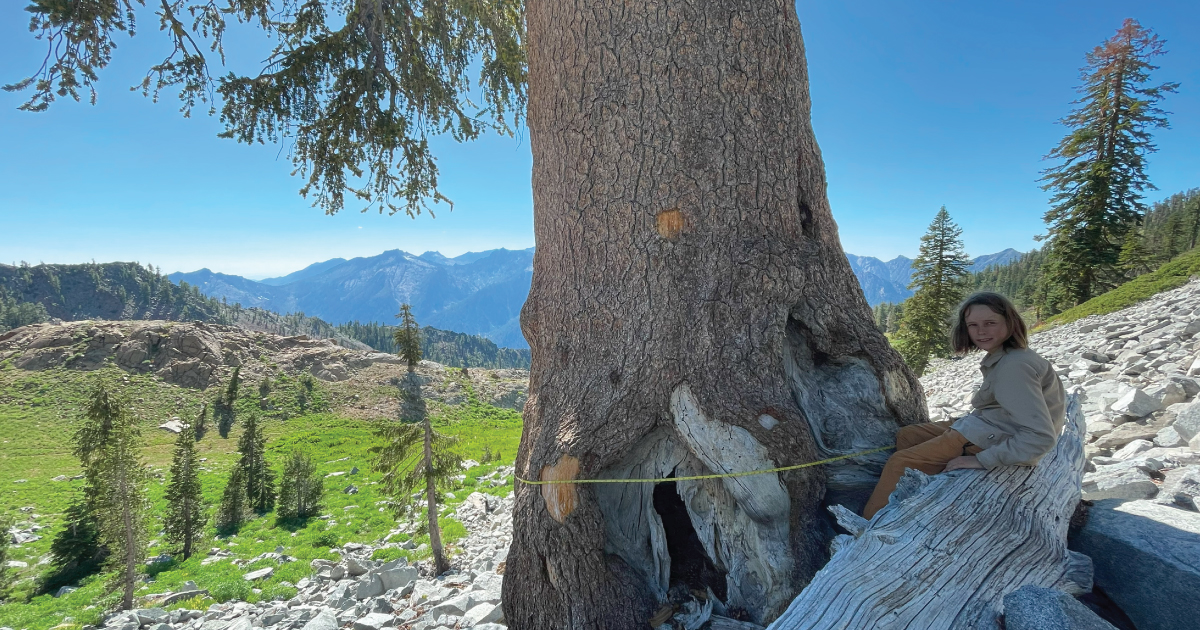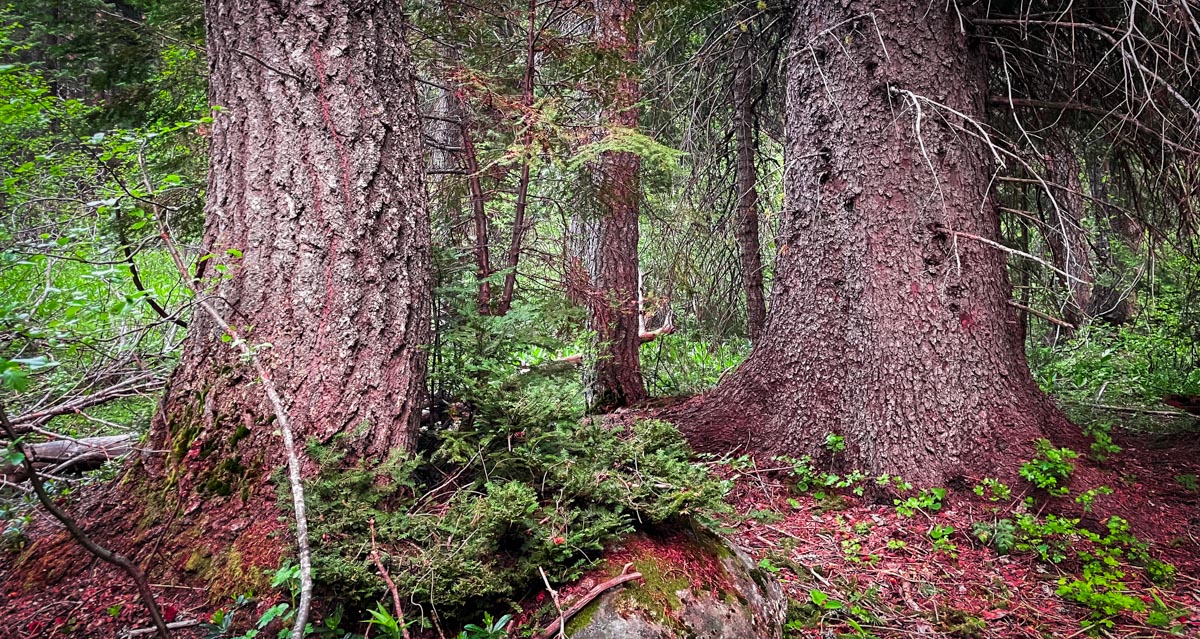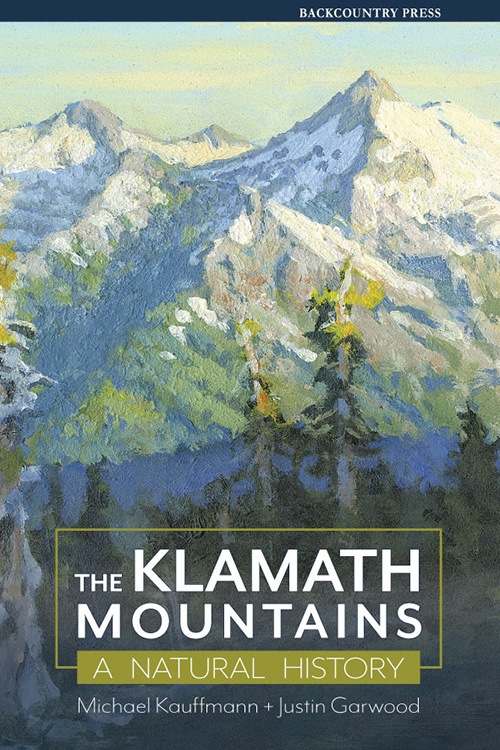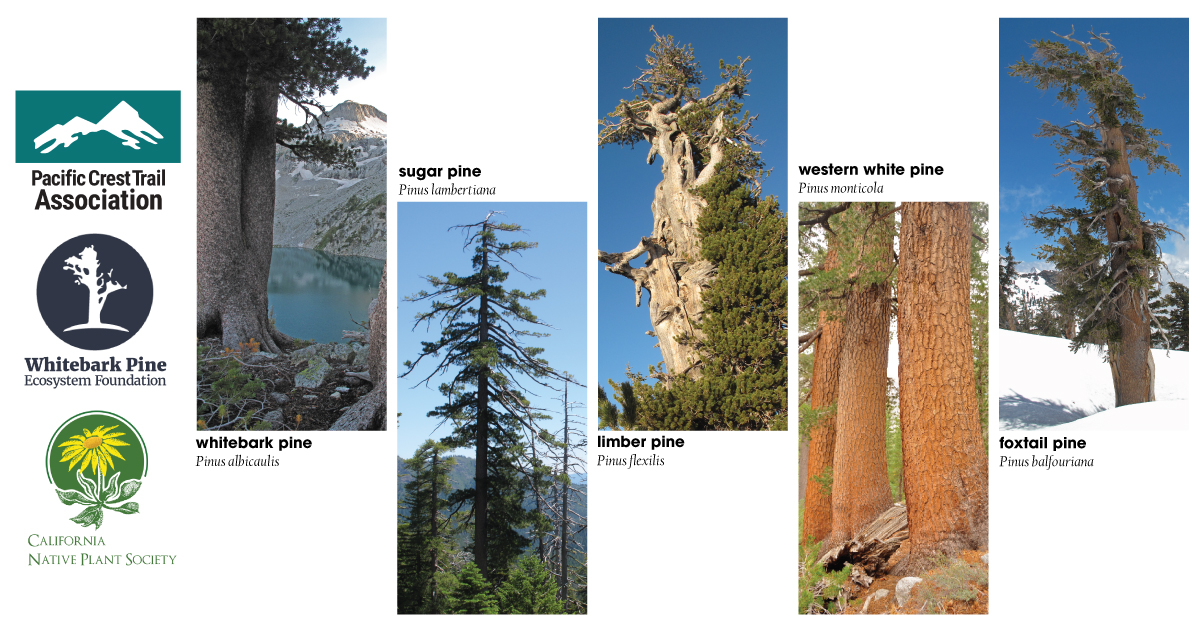Pinus balfouriana subspecies balfouriana
In 2010, I first found this tree while backpacking through the Trinity Alps Wilderness in far northern California. Just last week, thirteen years later, my son Sylas and I returned with tools to officially measure and nominate this tree. While points fell just short of the overall champion, it is the second largest foxtail pine known and the largest of the subspecies of the Klamath foxtail pine (Pinus balfouriana subsp. balfouriana).
It measures 24’ circumference 84’ tall 44’ crown spread for 383 AF points. CLICK for how to measure a tree.
